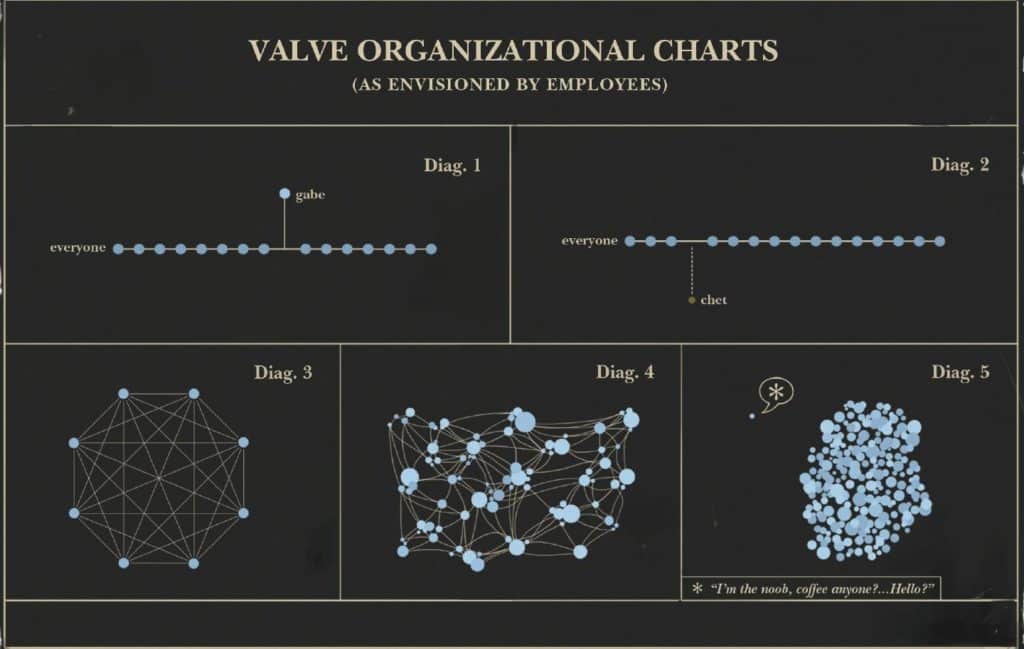A One-Stop Guide to Remote Software Developers Onboarding
Updated: June 11, 2024
Do you know about the “new guy syndrome”? It’s that feeling of crushing anxiety you get when you start a new job and have no idea about how everything works. Then you end up underperforming because of it and it fuels your anxiety even further. Most importantly, such issues happen not only during on-site employment but with remote hires too due to the lack of remote software developers onboarding process.
In order to combat this, HR specialists have developed an engineers’ onboarding process. The practice has been around since the 1970s, yet, according to Harvard Business Review, 22% of companies have no onboarding process at all. And of those that do have one, over three quarters have not been particularly successful with it.

We provide companies with senior tech talent and product development expertise to build world-class software. Let's talk about how we can help you.
Contact usRelevant Software has been providing staff augmentation services since 2013 to dozens of different companies. We’ve seen both how important remote software development team onboarding can be, and how it can go horribly wrong. But most importantly, we’ve learned how to do it right in just three easy steps.
Table of Contents
Step 1. Introductions
There are many things your new hire will need to get familiar with — their colleagues, the tools they will need to use, the company culture, etc. It’s important that these things are presented to them in a way that will not overwhelm or inconvenience them. And to make it so, you need to begin introductions way before the actual first day.
Introduce Tools and Software
To cut down on the training process and make the first days of your new employee more effective, make sure that they know the tools they will be using. For example, give them a list of software they will need during the last round of their interviews — this way they can install these tools on their personal computer and start learning them right away.
BONUS: Ideally, you should also provide newcomers with detailed manuals for these tools — or arrange a dedicated meeting with an instructor. If you are using the Atlassian infrastructure, consider using the Confluence space for such manuals.
Introduce Your Company and Project
If you are hiring a dedicated team, it’s fair to inform them of what your project is and where it is going. Make sure that you provide them with answers to these questions:
- What are your company and the project you are hiring for?
- What is the function of the said project?
- What are its short-term and long-term goals?
- What issues has it faced before and how have they been solved?
- What issues is it facing right now or will face is near future?
- Which tasks are the most important right now?
While it may sound like a lot, it provides a very important reference to the overall situation around your company and helps the newcomers feel more confident.
Introduce Corporate Culture
All companies are somewhat unique in the way they do things. For example, some demand a business dress code, while others are perfectly content with “smart casual” — a.k.a. T-Shirts and shorts. Then there is the atmosphere, the level of familiarity between your employees, the guidelines for escalating issues and thousands of other small details that your team has organically developed into unique corporate culture. And taking it all in without points of the previous reference might be a little overwhelming.
Therefore, it’s a good idea to create an Employee Handbook that will describe the very basic rules of working in your company. For example, “don’t make edgy jokes”, “act tactfully towards your colleagues”, “hold virtual beer meetings”, “don’t put pineapple on pizza” or, if you are on the stricter side, “do not use corporate channels for non-work-related communication”.

If you want a good reference for an Employee Handbook, consider using Valve’s. It is extensive, yet also very well executed in showing the key points about the company — its history, philosophy, key infrastructure, and even the way they handle the most common issues. And most importantly, it is not boring.
BONUS: While a Handbook is a great tool, consider summarizing it for your hire during their first onboarding meeting. It will help a lot to ease them into the corporate culture and give them a great opportunity to answer questions.
Introduce Future Colleagues
There is one rule of personal introductions — keep it simple. Unless, of course, you are introducing a Queen of England, which would require some decorum. But since the number of monarchs among remote software developers is depressingly low, consider this approach as a basis:
- Introduce their future team leader to the new employee during the last round of negotiations. Let them both ask each other questions if they have any.
- Introduce the rest of the team on the first day. If your hire requires a mentor, appoint one beforehand and introduce them specifically.
BONUS: If you are doing a remote software development team onboarding, consider doing a virtual tour of your office via Skype, and introduce the key employees during it. This way, if your remote staff ever comes to your office, they will feel more at home. Additionally, it will make your company feel like more of a real entity, with real people working there, instead of just names in the corporate chat.

Step 2. Workplace Setup
With introductions out of the way, it’s time to start easing your new hire into the actual workflow. This is the part of the onboarding that most companies get right, yet it is still a good idea to go off a checklist.
If you are adding a new employee to your project, make sure that they have everything they need to start working:
- Access to the corporate chat. If your chat system supports groups and private rooms, make sure that the new employee is added to everyone they need.
- Access to the project management system. Make sure that they have the privileges to edit the tasks.
- Access to the test environment and the API keys;
- Access to the internal company documentation, guidelines and manuals;
- Introduction to the meetings plan;
- Access to the internal services, like the DeskHelp, IT support and other tools.
You can, of course, give all these accesses only after the need for them comes up, but it is going to make the first couple of days for your employee pretty miserable. It’s better to spend an hour granting them access right away than to lose their goodwill and make a bad first impression.
Step 3. Technical Documentation
While the previous two steps were more of a common ground for all hires, the third one is very specific to new developers in your company. Without technical documentation, they simply can’t start working on your project — they don’t have a frame of reference to appraise it, determine the best practices and the pain points.
From personal experience, there were times when we had to wait for weeks — if not months — because our customer forgot to renew the access credentials or didn’t have the project documentation. So we ended up wasting a lot of time just trying to communicate with them or figuring out how to run the project properly in the local environment.
Therefore, we came up with a checklist for the remote software developers onboarding:
- Source code, ideally, in the form of access to your GIT-repository;
- Database and the setup manual for it.
- Dependencies for your project, including the version number for each one.
- API keys and credentials for the tools that are used in the project.
- Sample data and the manual for its input.
- Test suites, in order to make sure that everything runs fine.
- Deployment credentials for the staging and production servers.
- Development notes, if available. This will help us learn the application’s quirks from the previous team’s experience and avoid the mistakes they’ve made.
If you are using any unusual tools — for example, a custom compiler for your production server — please make sure that the instructions are included with the credentials. Deployment is a scripted process and the developers need to know the process step-by-step in order to make sure they won’t break already existing features.
BONUS: It would be a huge help if you included a Docker file with a working build of your project. Docker is a container for software with all the dependencies and settings already built-in and will save a lot of time when setting up local environments.
Questions to boost your onboarding
Onboarding is not exactly a hard discipline and there are many ways to skin this particular cat. Therefore, it is a good idea to improvise a little and try to come up with your own practices that suit your company better than the traditional stuff.
If you want to evaluate your current onboarding program, consider how well it answers these questions:
- Is our company welcoming?
- Are our employees proud to work here?
- Can we share a story that would symbolize it?
- Are our vision, goals, and uniqueness visible for our new employees?
- Do our employees know that they matter to us?
- Is our onboarding program interesting? Does it produce feedback?
- Is this feedback taken into consideration?
- Do we have an extensive informational resource?
You need to be very honest with yourself here, even though you might not like the answers. But remember that each “No” on this list is a chance to focus and improve an aspect of your company.
Read more about remote leadership and managing a remote team.
Conclusion
Remote software developers onboarding is not crucial. There are companies that completely ignore it and they manage to keep the door open just fine. However, at the same time, they are constantly bleeding talent, constantly looking for new employees, and never operate as well as they could be.
If you want to use your resources to their full potential and own the best talent available, you need a great onboarding process. Only then will you reduce turnover and finally see the full capabilities of your new staff. And while there isn’t an onboarding system that would work in all cases, we hope that you can use these guidelines to make your own.
Also, take notice that we did not include the HR paperwork and workstation set up in this guide. There is one simple reason for it — we’ll do it for you. By hiring a Relevant dedicated team, you make sure that office space, hardware and software are already taken care of. We will even handle HR, retention, payroll, taxes and all the other routine bureaucracy on our end. All you need to do is introduce our team to your company, give us access to your project and watch as we turn it into a releasable application in record time.
Our core services:
Do you want a price estimate for your project?
Do you know that we helped 200+ companies build web/mobile apps and scale dev teams?
Let's talk about your engineering needs.
Write to us











